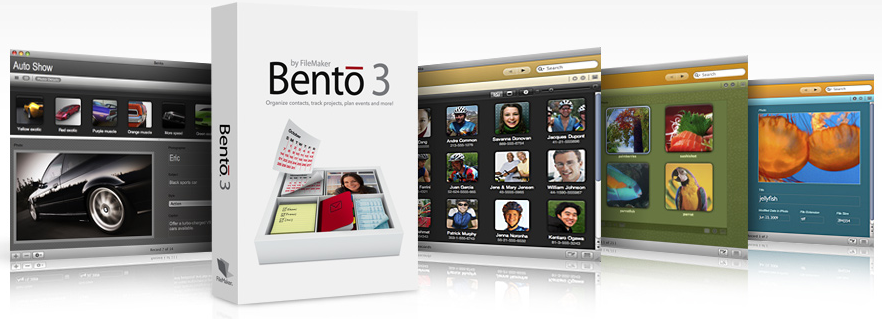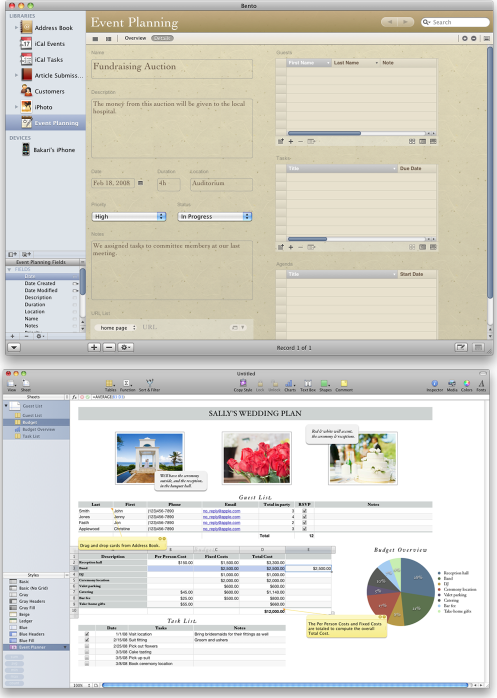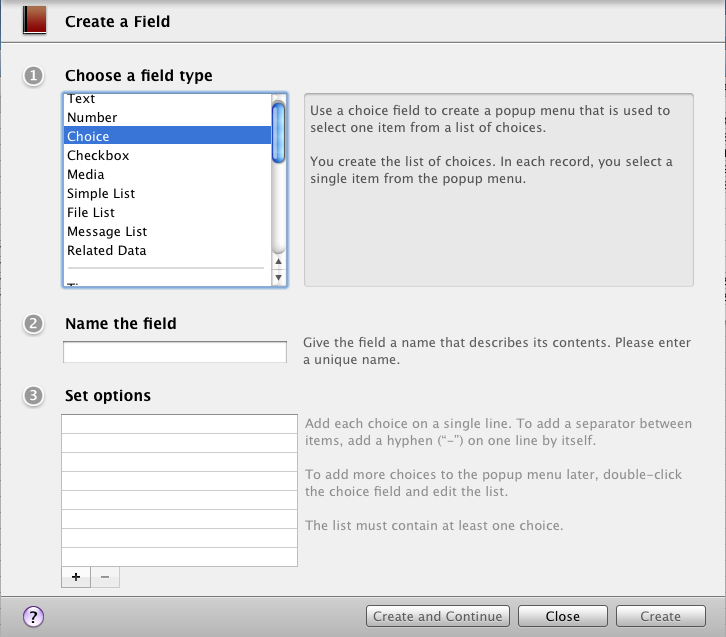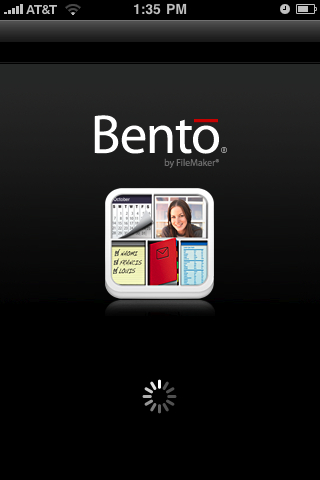Data Gathering with Bento 3

Data gathering and management can be tedious tasks, especially in working with programs like Excel or even Numbers. Just imagine having to maintain your address contacts in a traditional spread sheet!
Since its inception, FileMaker’s Bento, a consumer-based data management program, was well received for its ease of use. Its recent third update includes program integration with iPhoto, Mail, MobileMe, and the iPhone and iPod touch. It also includes an iTunes-like album view of data.
Bento is template-based and it draws upon existing data already on your hard drive. So say you’re running a small business or organization, you can draw on contacts in your Address book, iCal dates, and iTunes and iPhoto libraries to build your database. You can also bring existing data/spread sheets from Excel or Numbers.
What makes Bento appealing is its relatively simple to use drag and drop interface. It’s not just a grid of rows and columns, it allows you to input photos and other visual data for say media cataloging, and displaying data in an appealing format to clients or organization members. There are several ways to display data, and you can easily change the background color or texture of a project with a few simple clicks.
Bento comes installed with 35 pre-designed templates that can of course be customized for your specific needs. Existing templates can be used for recipes, maintaining a diet or exercise log, home inventory, time billing, event planning, product sales, membership list, customer issue tracking, donations, party planning, and invitations.
Admittedly, many of these record keeping templates can be handled by other existing applications and websites, but if you want more customization over your data collection, it can be done fairly easy in Bento.
Bento vs. Numbers
If you already have Apple’s Numbers (data management) program installed on your computer, you might be wondering if you need Bento. Both programs are similar in orientation. Both programs can access existing data (Address Book, Calendar, and iPhoto) on your Mac. Both have similar templates to get you started with a project, and both provide very visual presentations for your data collections.

However, there are major differences between the two. Numbers provides better, more advanced control over managing and organizing data; that is, if you know how to make use of the functions and formulas to manipulate data. With Bento on the other hand, you add fields to your layouts and projects based on the type of data collection and management you need. The pre-figured fields are like drop-down menus, text-input windows, or automatic calculations that you find in computer applications and websites. For instance, if you wanted to keep an inventory list of products you’re selling, you might add a text field for listed items, fields for cost and quantity, and perhaps a media field for a photo of each product. You might also add an automated counter field so that each time you add a new item, your numbered list is automatically updated.

One other feature missing from Bento that exist in Numbers is the ability to display your data in the form charts. There is a very limited calculations field for Bento, but if you’re looking to do advanced or complicated analytical projects, Bento will not be useful. Though you can import existing Excel and Numbers data into Bento, it will not handle many of the advanced formulas for those two programs.
Creating Bento libraries or projects is sort of like developing small customized computer applications, but you don’t need to know formulas and codes in order to produce them. FileMaker has also created an iPhone and iPod touch version of Bento that works with or without the desktop version of Bento. Projects can of course be synced between each version; however, the interface of the iPhone version of projects are more linear than the desktop version. The iPhone application also includes existing templates that you can start using right within the iPhone Bento application and sync back to your Mac.

Photo Integration
There are two ways to get photos into your Bento libraries. For example, if you’re cataloging photos of your artwork collection, you can create an album of those photos in iPhoto and then access that collection through Bento. From there, you can add and customize fields for your particular catalogue. The other option is to add a media field to your library, and from there you can drag and drop photos directly from your Finder.
While this iPhoto integration is very useful, I’m surprised that Bento doesn’t integrate with Apple’s pro application, Aperture 2.0. No doubt many professional users of Aperture might find Bento useful for their work.
Support
The FileMaker website includes downloadable video tutorials and a PDF manual for using Bento 3, but I think it could use more tutorials. Parts of the program are not intuitive, especially for its advanced features. There are a couple of third-party resources that might be useful, including Jesse Feiler’s The Bento Book, and Cris Ippolite’s video tutorial series, Bento Essential Training.
The FileMaker site also includes a Template Exchange for downloading and submitting customized templates. This is a great timesaver and it might provide some additional ideas for making use of the program.
Bento 3 is $49 for new users and $20 for existing Bento 1 and 2 users. A trial download of the program is also available. The iPhone application version is $4.99.


Comments
Bento is one of those programs that has helped organize the way I do projects for work or at home though I agree that it could use charts or the ability to do more complex calculations. The template exchange is definitely a great resource. There are other good templates to be found over at http://www.bentotemplates.com
Bento 3 new features offers, including integration with iPhoto, new security options, and the ability to share Bento libraries with up to five users on a local network. undermount kitchen sink